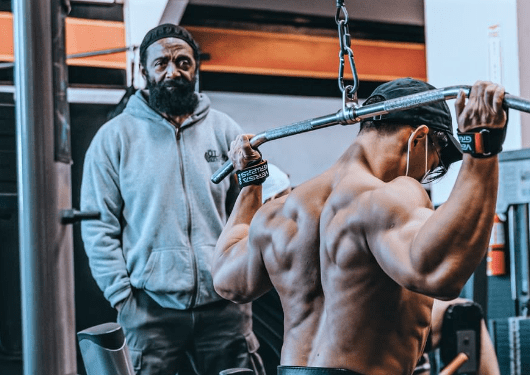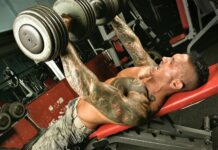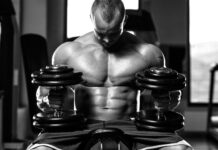Charles Glass may be the world’s best bodybuilder trainer, and not just because, for over three decades, he’s trained many of the world’s best bodybuilders. The Godfather of Bodybuilding is also an original thinker and tinkerer, always seeking out the adjustments and angles to make exercises work better, hitting their targets more accurately and stimulating greater growth.
Charles Glass (1950- ) was a collegiate gymnast before transitioning to bodybuilding. Thick and superbly conditioned, he won the middleweight class of the 1983 NPC Nationals and IFBB World Championships before competing sporadically but not very successfully in the Pro League. Glass found his true calling not as a pro bodybuilder, but as a trainer of pro bodybuilders in Gold’s Gym, Venice, California. The list of bodybuilding legends he’s trained includes Shawn Rhoden, Flex Wheeler, Chris Cormier, Paul Dillett, Dennis James, Gunter Schlierkamp, Brandon Curry, and Kai Greene. The list of other celebrities he’s trained includes Magic Johnson, Wesley Snipes, Calvin Klein, George Foreman, and Dwayne “The Rock” Johnson. And there have been a lot of unfamous people, too, including The Barbell’s editor-in-chief.
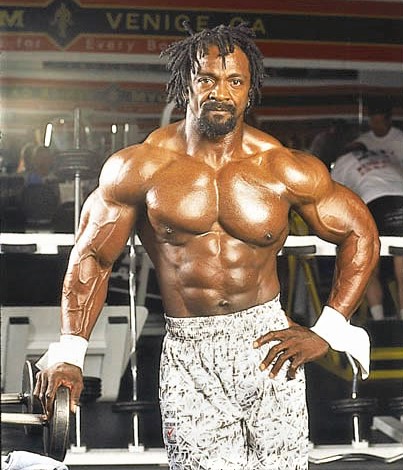
The sage Charles Glass prescribes to his acolytes what is often called “angle training” for the many original or underused exercise and exercise tweaks that attack muscles from unique angles. What follows are Charles Glass’ best training tips.
1. INCLINE PULLDOWN
“There’s two ways to do this: face-up and face-down. Either way, we set the incline bench up so the back of the bench is facing the pulldown station. If you’re face-up, you lie on the bench, and someone helps you stay down by pressing on your lower chest, as you pull straight down to your upper chest. The key is to really contract the upper lats and inner traps. You get a really strong contraction in the whole upper back with this one, and there is no cheating. The other way is face-down. On this one, I like to use two handles that can separate. Lean forward at the stretch of reps so you’re lying fat on the incline bench and come off the bench at the contraction of reps to really squeeze. Again, you really want to squeeze those contractions, and you should feel this one in your mid-back and outer lats.”
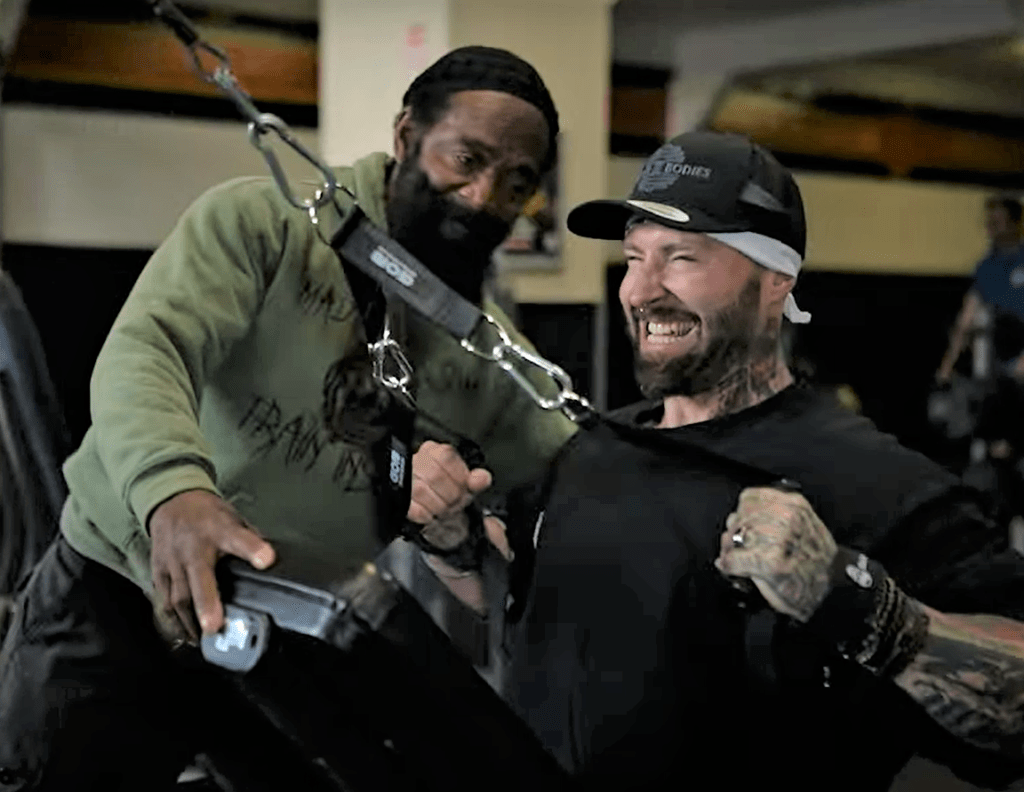
2. TWO-STEP REP
“One thing I have my clients do to up the intensity is a two-step rep. With this you pause at the bottom for a second to take out all the momentum. This is especially effective on any kind of press, like a bench press. So that’s the first stop. Then I have them stop at the halfway point on the way up for a second. Again, this stops the momentum, so you have to work that much harder to finish the rep. So the positive half of every rep is broken down into two steps: from the bottom to halfway and from halfway to the top. It makes reps a lot harder, so you can’t use as much weight, but that’s a good thing because it protects against injuries caused by driving up heavy weights with momentum. We want to make reps harder, not easier.”
3. DRAG CURL
“Drag curls are a good exercise for biceps, because you have to remember gravity wants to pull the weight straight down. So, on any other curl the weight is traveling in an arc, and you lose tension on the biceps at the bottom and the top. But not with a drag curl because the bar goes straight up and down against gravity all the way. I have my clients really focus on squeezing and holding contractions to keep tension in the biceps. It’s a shorter movement, and there’s no reason to go real heavy, but it’s very effective if done right. I like to use a straight or EZ-curl bar with a shoulder-width grip. When you drag the bar up, what you want to do is squeeze your scaps [scapula] together. Let the elbows slide back as you squeeze your biceps. You’ll know you’re doing it right if you feel both your upper, inner back and your biceps contracting at the top. And hold that top contraction for a count and really squeeze.”
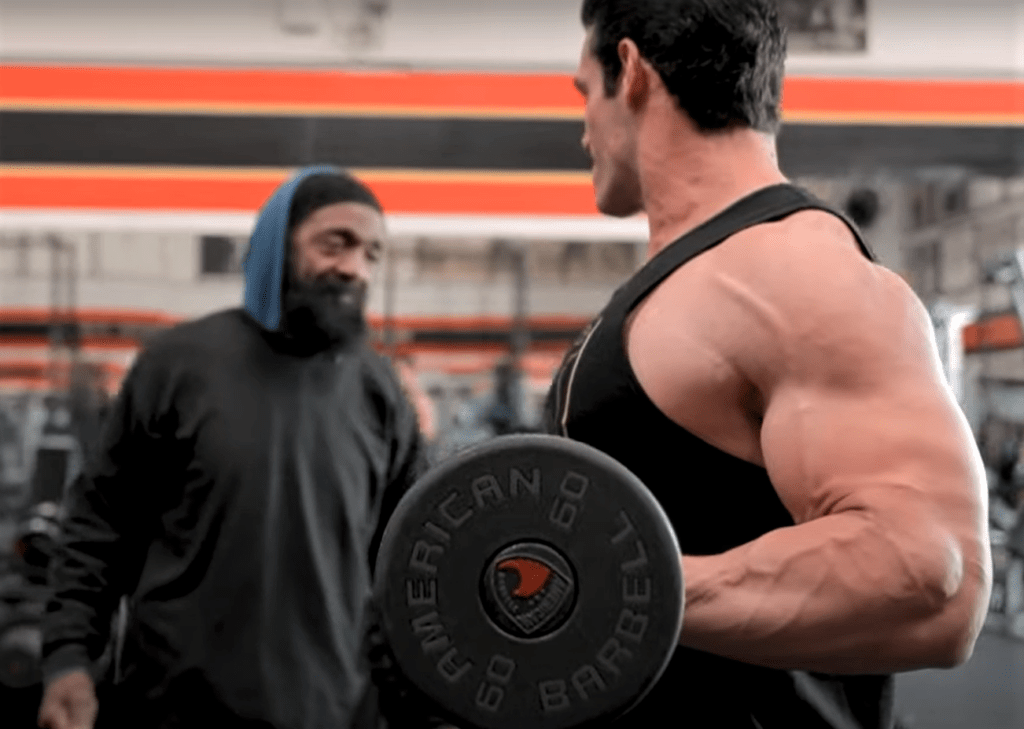
4. WIDE-GRIP UPRIGHT ROW
“When you take a wide grip on the upright row—wider than shoulder width—you focus it on the medial delts and not the trapezius. You also don’t lift the weight very high, unlike a traditional narrow-grip upright row, so it’s safe for your shoulder joints. Pull up till your elbows are in line with your shoulders. With a wide grip, the bar shouldn’t even come up to your chest. You’re lifting with only your medial delts. To really focus this on your delts, do side laterals first and then do wide-grip upright rows.”
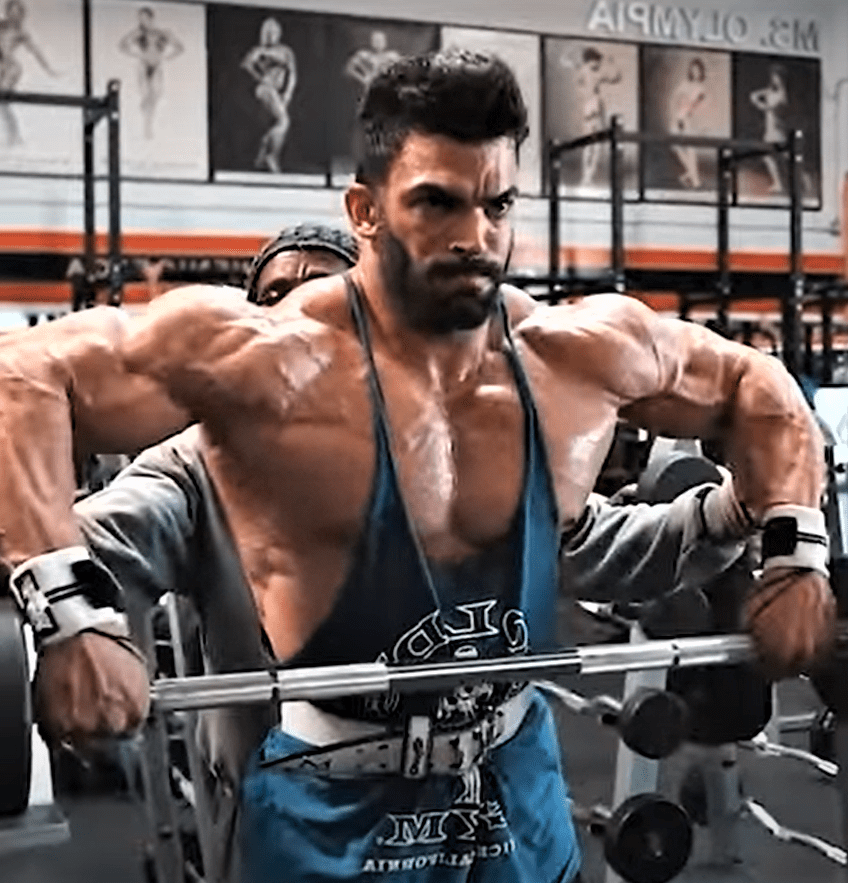
5. ALWAYS WEAR A BELT
“I’m always wearing a weightlifting belt in the gym. Under my sweatshirt, I have a belt tightened up. It doesn’t just protect my lower back; it also reminds me to always keep my waist pulled in. That’s why I encourage my clients to wear a belt and not just on back day. You may not even know when you’re pushing out through your waist when you breathe on heavy sets of exercises like leg presses, low cable rows, and incline presses; but, without a belt, you probably are. And over time that stretches your waist out, makes you get comfortable with get comfortable with bad posture, and it teaches you to breathe wrong. I’ve been able to take inches off people’s waists just by getting them to wear weightlifting belts, because it gets them to pull their waists in and strengthen the transverse abs on the inside. And all that is in addition to protecting their lower backs.”
6. REVERSE HACK SQUAT
“The reverse hack squat is a variation of the squat that’s done with your body facing towards a hack machine. It’s a very effective quad exercise as long as you keep your knees slightly out and next to the machine. Put your heels on the outer edge of the platform next to the supports. Your shoulders are at the front edge of the shoulder pads, not all the way in near the back pad. Then when you go down, keep your back straight; don’t let your butt go out because that will stress the lower back more. Your knees should be against the supports the whole time. If you do this right, you should feel it only in your quads. The reverse hack squat is more like a front squat, and the regular hack squat is more like a back squat.”
7. UNDERHAND FRONT RAISE
“An exercise I like a lot for the front delts is the underhand front raise. You can do this with an EZ-curl bar and take a narrow grip. Keep your elbows slightly bent and raise the bar to face level. This takes all the pressure off your elbows and arm tendons and lets you focus everything where you want it—on your front delts. Another way to do this is with a single dumbbell. Forget the handle. Cradle the weight sides of the dumbbell in your palms [one side in each palm], and keep your elbows slightly bent. Lean forward. I like to have my clients sit on the back of an incline bench. Focus on the top of the movement, from where your arms are a little below parallel [to the floor] to a little above parallel. That’s the key part of the movement to really stimulate the front delts, and a dumbbell gives you that perfect narrow grip.”

8. TRAIN QUADS AND HAMS ON SEPARATE DAYS
“My approach to legs is different from many people: I do quadriceps and hamstrings on separate days. Both sides of the legs require intensity and a high volume of sets to ensure hypertrophy. If your quads are trained properly, you will not have the energy to train your hamstrings effectively in the same workout. In fact, I like to have at least two days between working quads and working hams. If you want, you can work somethings unrelated on the quad and ham days, something smaller like biceps or triceps or shoulders and definitely abs and calves.”
9. HOLD THE SUPPORT BARS
“On exercises like machine rear laterals, Hammer Strength lever pulldowns, and even Hammer Strength presses, I often have my client forget the handles and instead grip the bottom of the support bars. This gives you a parallel grip and really targets where I want to hit. It can also, depending on the exercise, take your arms out of it a little bit. So instead of doing an underhand grip on Hammer pulldowns, which works the biceps more, we’ll grip the support bars and work the biceps less and the back more with a parallel and slightly wider grip. It’s those little grip differences that can change the feel and effectiveness of an exercise.”
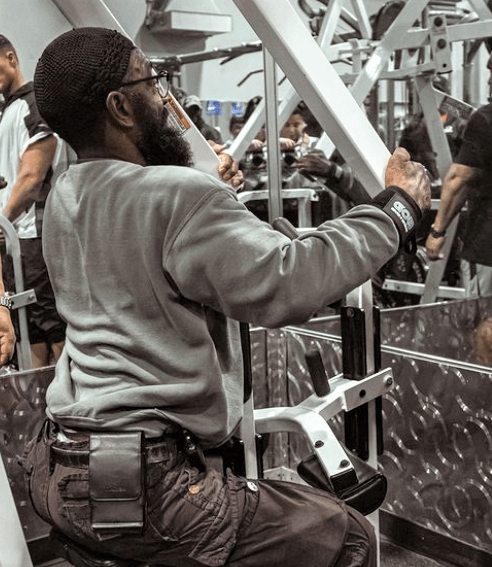
10. LOWER CABLE ROW
“There are a couple things I focus on with low-cable rows. Number one, I want you to sit up high. I often have my client sit on a dumbbell on the bench, so he’s pulling up and in and not just pulling in. That just provides a little better angle to stretch the lats. Number two, I want him to lean forward into each rep, stretching out his lats and then come back to sitting straight at contractions. Most people stay straight and then lean back, and that way they’re not getting the strongest stretch or contraction. We’re really focused on pulling the elbows back and contracting the lats and the inner back.”




































